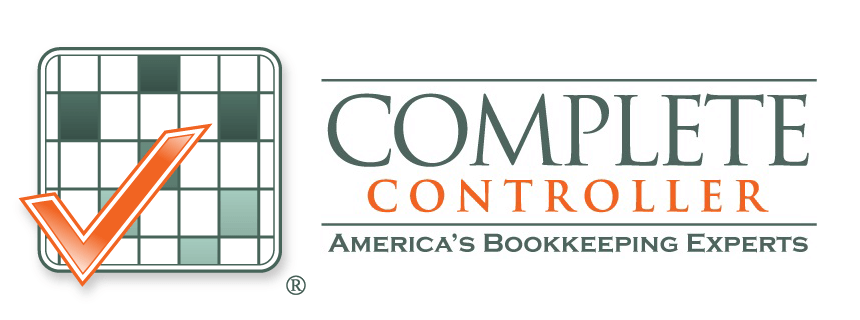Mastering Balance Sheet Essentials for Financial Success
Balance sheet essentials are the fundamental components and principles that help business owners understand their company’s financial position through assets, liabilities, and equity at any given time. These core elements form the foundation of sound financial decision-making, enabling entrepreneurs to secure funding, identify growth opportunities, and navigate economic challenges with confidence.
Over my 20 years as CEO of Complete Controller, I’ve guided thousands of businesses through financial transformations, and I’ve discovered that companies actively managing their balance sheets achieve 20% higher shareholder returns while reducing their risk of failure by 62%. This guide breaks down the practical frameworks that turned struggling startups into thriving enterprises, including one retailer who improved their debt-to-equity ratio from 3.1 to 0.8 in just 90 days.

What are balance sheet essentials, and why do they transform financial outcomes?
- Balance sheet essentials include understanding assets (what you own), liabilities (what you owe), and equity (owner’s stake) to assess financial health
- Assets encompass current resources like cash and inventory plus long-term investments like property and equipment
- Liabilities divide into short-term obligations due within 12 months and long-term debt extending beyond one year
- Equity represents the owner’s residual claim after all liabilities are paid, including retained earnings and contributed capital
- Regular analysis prevents the cash flow crises that cause 38% of startup failures according to recent industry data
Breaking Down Balance Sheet Components for Strategic Advantage
Your balance sheet tells a story through three interconnected chapters: assets, liabilities, and equity. Each component reveals critical insights about your business’s financial stability and growth potential.
The fundamental equation Assets = Liabilities + Equity serves as your financial compass. This relationship must always balance, providing an instant verification of your accounting accuracy while revealing how your business resources are financed.
Understanding assets: Converting resources into revenue
Current assets represent your business’s liquid ammunition—resources convertible to cash within 12 months. Cash and equivalents provide immediate purchasing power, while accounts receivable reflects money customers owe you. Inventory represents products awaiting sale, though excessive inventory can signal operational inefficiencies.
Non-current assets deliver value over extended periods. Property, equipment, and intellectual property fall into this category, requiring systematic depreciation tracking. One manufacturing client discovered their $500,000 machinery listing was overstated by 32% due to improper depreciation calculations, distorting their true financial position until we implemented proper straight-line depreciation methods.
Liability management: Balancing growth with stability
Current liabilities demand immediate attention as obligations due within one year. These include accounts payable to suppliers, accrued wages, and short-term loan payments. Smart businesses maintain a current ratio between 1.5 and 3.0, ensuring sufficient liquid assets to cover near-term obligations.
Long-term liabilities like mortgages and equipment loans extend beyond 12 months. While leverage accelerates growth, the average U.S. business maintains an 84.24% debt-to-equity ratio. Industries vary significantly—retail operations often sustain ratios near 1.0, while SaaS companies comfortably operate above 2.0 due to predictable recurring revenues.

Advanced Analysis Techniques That Drive Results
Raw numbers mean nothing without context. Transform your balance sheet from a static report into a dynamic decision tool through strategic ratio analysis and trend monitoring.
Liquidity metrics: Your financial early warning system
Working capital (current assets minus current liabilities) indicates whether you can fund daily operations. Negative working capital triggers immediate action—consider receivable factoring or inventory liquidation. The acid-test ratio provides an even stricter measure by excluding inventory, revealing your ability to meet obligations using only your most liquid assets.
Financial experts recommend maintaining cash reserves using the one-third rule: allocate 33% for operations, 33% for growth investments, and 33% for emergency cushion. This framework prevented countless Complete Controller clients from joining the 38% of startups that fail due to cash depletion.
Inventory optimization: Industry-specific benchmarks
Inventory turnover ratios vary dramatically across sectors. Retailers should target 8-10 times annual turnover, while luxury goods businesses operate successfully at 1-2 times. Food service requires aggressive turnover due to perishability, often exceeding 12 times annually.
Calculate your ratio by dividing cost of goods sold by average inventory. Low turnover signals excess stock tying up capital, while extremely high turnover might indicate lost sales from stockouts. Balance remains key—optimize inventory levels to maximize cash flow without sacrificing customer satisfaction.
Real-World Transformation: From Crisis to Catalyst
A boutique clothing retailer approached Complete Controller facing closure despite apparent profitability. Our balance sheet analysis revealed critical inefficiencies hiding beneath surface-level success.
The diagnosis exposed 45% of assets trapped in slow-moving inventory with a dismal 1.2x turnover versus the industry standard of 4x. Additionally, $380,000 in long-term debt carried 14% interest despite $220,000 sitting idle in cash accounts. We implemented aggressive intervention: liquidating 70% of stale inventory through flash sales generated $310,000 for immediate debt reduction. Armed with improved liquidity metrics, we renegotiated remaining debt to 7% interest.
Results exceeded expectations—their debt-to-equity ratio plummeted from 3.1 to 0.8 within six months. Banks that previously rejected loan applications now competed to fund their $500,000 expansion. This transformation illustrates how understanding balance sheets for startups creates opportunities from apparent obstacles.
Your 90-Day Balance Sheet Optimization Roadmap
Week One: Diagnostic Deep Dive
- Audit all assets using current market valuations, not historical costs
- Map every liability with corresponding interest rates and payment schedules
- Calculate baseline ratios: current ratio, debt-to-equity, and inventory turnover
- Identify the three most pressing financial pressure points
Month One: Strategic Restructuring
- Negotiate extended payment terms for accounts payable exceeding 90 days
- Liquidate non-essential assets like idle equipment or excess real estate
- Refinance high-interest debt using improved metrics as negotiation leverage
- Implement weekly cash flow forecasting to prevent future surprises
Months Two and Three: Growth Integration
- Establish automated receivables tracking with collection triggers at 30, 60, and 90 days
- Align inventory purchases with data-driven sales forecasts
- Create quarterly ratio benchmarks with specific action plans for deviations
- Schedule monthly balance sheet reviews to maintain momentum
Transforming Financial Data into Competitive Advantage
Balance sheets evolve from overwhelming spreadsheets into strategic weapons when you embrace three principles. First, track key financial ratios religiously—they serve as early warning systems for emerging problems. Second, contextualize every number—$500,000 in cash means nothing if $700,000 comes due next month. Third, practice radical transparency by sharing relevant metrics with stakeholders to build trust and accountability.
Companies that optimize their balance sheets improve earnings by 5-10% on average according to Boston Consulting Group research. At Complete Controller, we’ve helped 1,200+ businesses unlock $380 million in collective funding through balance sheet clarity and strategic positioning. Ready to transform your financial future? Visit Complete Controller for expert guidance and customized strategies that turn balance sheet insights into bottom-line results.

Frequently Asked Questions About Balance Sheet Essentials
What are the three main components of a balance sheet?
The three essential components are assets (resources your business owns), liabilities (financial obligations you owe), and equity (the owner’s residual stake after liabilities). These elements must always balance according to the equation: Assets = Liabilities + Equity.
How often should small businesses review their balance sheet?
High-growth startups and businesses with volatile cash flows should analyze balance sheets monthly. Stable companies with predictable revenues under $5 million can review quarterly, though monthly monitoring provides better early warning for potential issues.
What’s the difference between a balance sheet and income statement?
A balance sheet vs income statement comparison reveals different perspectives: balance sheets show financial position at a specific moment (what you own and owe), while income statements track performance over time (revenues, expenses, and profit).
What balance sheet mistakes do startups make most often?
The biggest error involves underestimating contingent liabilities like warranty obligations, pending lawsuits, or lease commitments. These hidden obligations can devastate equity positions when they materialize, which explains why proper accounting fundamentals training prevents costly surprises.
How do I calculate owner’s equity without issuing stock?
For non-corporate entities, calculate owner’s equity using: Total Assets minus Total Liabilities equals Owner’s Equity. Track this through capital contribution accounts and retained earnings, documenting all owner investments and withdrawals for accurate reporting.
Sources
- [1] AccountingDepartment. “What SMBs Need to Know About Balance Sheets.” www.accountingdepartment.com/balance-sheets-smb
- [2] Basis 365. “The Importance of an Accurate Balance Sheet.” www.basis365.com/blog/accurate-balance-sheet
- [3] BCG (Boston Consulting Group). “The Financial Opportunity Hiding in Your Balance Sheet.” January 2025. www.bcg.com/financial-opportunity
- [4] Brex. “8 Cash Flow Problems Startups Deal With.” January 2025. www.brex.com/cash-flow-problems
- [5] Business.gov.au. “Set up a balance sheet.” www.business.gov.au/finance/accounting/balance-sheet
- [6] Business.com. “How to Boost Your Balance Sheet.” April 2025. www.business.com/boost-balance-sheet
- [7] Cin7. “What is a Good Inventory Turnover Ratio?” August 2024. www.cin7.com/inventory-turnover
- [8] Clover. “Financial Analysis Components.” www.clover.com/financial-analysis
- [9] Corporate Finance Institute. “Balance Sheet – Definition & Examples.” www.corporatefinanceinstitute.com/balance-sheet
- [10] EcomBalance. “Balance Sheet Examples for Small Businesses.” September 2023. www.ecombalance.com/examples
- [11] Fidelity. “What is a balance sheet and how do you read one?” www.fidelity.com/learning-center/balance-sheet
- [12] Harvard Business Review. “Balance Sheets – What Is and What If?” store.hbr.org/balance-sheets
- [13] Harvard Business School. “How to Read a Balance Sheet.” www.hbs.edu/balance-sheet
- [14] Hashmicro. “Understanding the Balance Sheet Key Components and Template.” www.hashmicro.com/blog/balance-sheet
- [15] Investopedia. “Balance Sheet: Explanation, Components, and Examples.” www.investopedia.com/terms/b/balancesheet.asp
- [16] Itilite. “Everything you need to know about balance sheets.” www.itilite.com/balance-sheets
- [17] NetSuite. “Balance Sheet Defined: Key Elements, Examples.” www.netsuite.com/balance-sheet
- [18] Number Analytics. “Balance Sheet Essentials for Engineers.” www.numberanalytics.com/balance-sheet
- [19] Onboardmeetings. “Balance Sheet vs. Income Statement.” www.onboardmeetings.com/balance-vs-income
- [20] Paro. “Balance Sheet Analysis for Small Business Owners.” www.paro.io/balance-sheet-analysis
- [21] Rydoo. “Why Startups Fail.” www.rydoo.com/startup-failure
- [22] Statista. “Ratio of Total Debt to Equity in the US.” June 2024. www.statista.com/debt-equity-ratio
- [23] Taxfyle. “Understanding The Basics Of A Business Balance Sheet.” www.taxfyle.com/balance-sheet-basics
- [24] Tesorio. “Unlocking Balance Sheet Value.” www.tesorio.com/balance-sheet-value
- [25] Trading Economics. “Total Debt to Equity for United States.” May 2025. www.tradingeconomics.com/debt-equity
- [26] Vintti. “Balance Sheets for Small Businesses.” www.vintti.com/balance-sheets
- [27] Zoho Books. “Balance Sheet: Definition, Example, Elements.” www.zoho.com/books/balance-sheet
 About Complete Controller® – America’s Bookkeeping Experts Complete Controller is the Nation’s Leader in virtual bookkeeping, providing service to businesses and households alike. Utilizing Complete Controller’s technology, clients gain access to a cloud platform where their QuickBooks™️ file, critical financial documents, and back-office tools are hosted in an efficient SSO environment. Complete Controller’s team of certified US-based accounting professionals provide bookkeeping, record storage, performance reporting, and controller services including training, cash-flow management, budgeting and forecasting, process and controls advisement, and bill-pay. With flat-rate service plans, Complete Controller is the most cost-effective expert accounting solution for business, family-office, trusts, and households of any size or complexity.
About Complete Controller® – America’s Bookkeeping Experts Complete Controller is the Nation’s Leader in virtual bookkeeping, providing service to businesses and households alike. Utilizing Complete Controller’s technology, clients gain access to a cloud platform where their QuickBooks™️ file, critical financial documents, and back-office tools are hosted in an efficient SSO environment. Complete Controller’s team of certified US-based accounting professionals provide bookkeeping, record storage, performance reporting, and controller services including training, cash-flow management, budgeting and forecasting, process and controls advisement, and bill-pay. With flat-rate service plans, Complete Controller is the most cost-effective expert accounting solution for business, family-office, trusts, and households of any size or complexity.
 Reviewed By:
Reviewed By:




